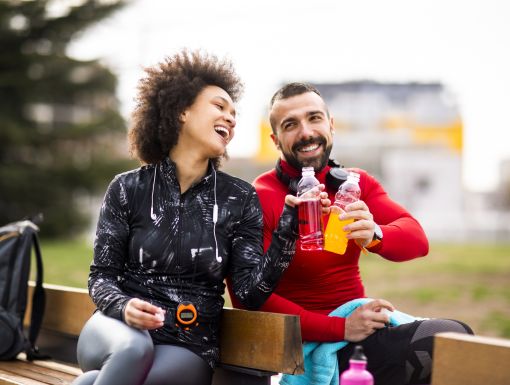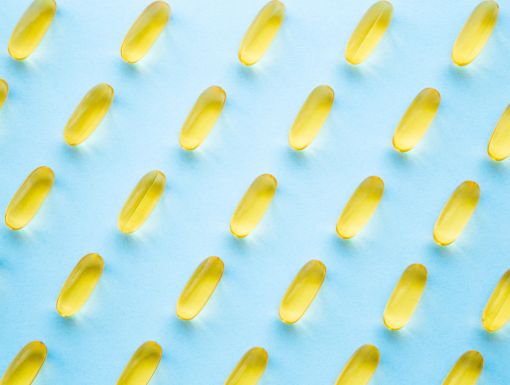
Returning to Sports During the COVID-19 Pandemic
High school football workouts and other sports around the state have started to resume in limited capacity and with COVID-19-related restrictions. Here are some things to know to ease your young athletes back onto the field safely.
How important is it for kids to get back on the field?
During the stay-at-home order, we were all advised to stay inside with our immediate families. There were limited options for exercise and no organized sport activity was permitted. Not only did kids miss out on the physical activity, but also the social and mental benefits that come with playing sports. Now that youth and high school sports have started back up, it’s important that participation is done safely to protect personal and public health.
What are some risks of team sports during the pandemic?
We know that participating in group activities can increase your risk of contracting COVID-19, and we know that COVID-19 can cause death. There may be a greater risk of virus transmission in youth sports as children and teens are less likely to exhibit serious symptoms. They can certainly contract the virus from an asymptomatic coach or player and bring the virus elsewhere, possibly infecting family members or friends. This is especially important for families who have medically vulnerable household members, specifically heart or lung disease, obesity and diabetes. People with the simultaneous presence of two chronic diseases or conditions have a harder time fighting off the virus and may require hospital treatment if symptoms become severe. It’s important that parents assess this risk and make the best decision for their family.
How can parents, coaches and athletic directors help protect kids while they are playing?
Ochsner’s sports medicine program is counseling many schools on best practices to not only protect kids from COVID-19, but also adult coaches, spectators and families.
This guidance includes:
- Proper hand hygiene
- Social distancing of 6 feet or greater
- Personal protective equipment
- Temperature and symptom screening upon arrival to the practice facility
- COVID-19 testing and isolating
- Contact tracing if someone tests positive for COVID-19
- Sanitation of equipment and facilities
- If you are sick, do not go to work, school or games and practices. Athletes should notify their athletic trainer or coach immediately.
- Wash your hands frequently and avoid touching your face.
- Wear a face mask when you are not exercising, training or playing. Coaches must always wear a face mask and the mask must cover the nose and mouth to be effective.
- Social distance while participating in group sports.
- Disinfect frequently touched items
- Players need to bring 1 gallon of water labeled with the child’s name and their own towel. It is recommended that they also bring one bottle of a sports drink and a protein bar or snack.
- There should be no sharing of water, food or towels among players. Athletes should not be permitted to participate if they do not bring water to practice.
- Training sessions should not exceed 60 minutes. When you’re overly tired, your immune system is less effective.
It is important to emphasize and understand that social distancing, hand hygiene and wearing masks are very effective in preventing the spread of COVID-19. If we want sports to continue to happen this year, it is imperative that everyone involved with sports, specifically coaches and the athletes, adhere to the recommendations that have been successful at decreasing the spread of COVID-19.
What are some best practices to follow?
- If you are sick, do not go to work, school or games and practices. Athletes should notify their athletic trainer or coach immediately.
- Wash your hands frequently and avoid touching your face.
- Wear a face mask when you are not exercising, training or playing. Coaches must always wear a face mask and the mask must cover the nose and mouth to be effective.
- Social distance while participating in group sports.
- Disinfect frequently touched items
When should an athlete be held from participating in sports? When can they return safely?
You should hold your child from all sports if they are COVID-19 symptomatic, awaiting test results and/or have had close contact with someone who has tested positive for COVID-19. If the athlete tests positive, the child would be out for a minimum of 14 days and need symptoms to fully resolve without the use of medications. The athlete will need to follow up with a pediatrician or primary care physician to be evaluated before clearance back into sports is allowed.
An athlete who has a negative COVID-19 test can return when they are fever- and symptom-free for at least three days without using fever-reducing medications such as Tylenol or ibuprofen.
What are some recommendations for practices?
- Players need to bring 1 gallon of water labeled with the child’s name and their own towel. It is recommended that they also bring one bottle of a sports drink and a protein bar or snack.
- There should be no sharing of water, food or towels among players. Athletes should not be permitted to participate if they do not bring water to practice.
- Training sessions should not exceed 60 minutes. When you’re overly tired, your immune system is less effective.
How can you keep your health on track?
Following all social distancing, hand hygiene and mask-wearing measures recommended by experts is still the best way to prevent the spread of COVID-19.
Ochsner Health is committed to keeping its patients safe as our communities return to our hospitals and clinics. We have stringent safety protocols in place and your health is our top priority.
The information in this blog post is accurate at the time of publication. However, as the situation surrounding COVID-19 continues to change, it's possible that information has changed since being published. While Ochsner Health is trying to keep our blog posts as up-to-date as possible, we also encourage readers to stay informed on news and recommendations by using the CDC website.
Visit www.ochsner.org/safe to learn more.


